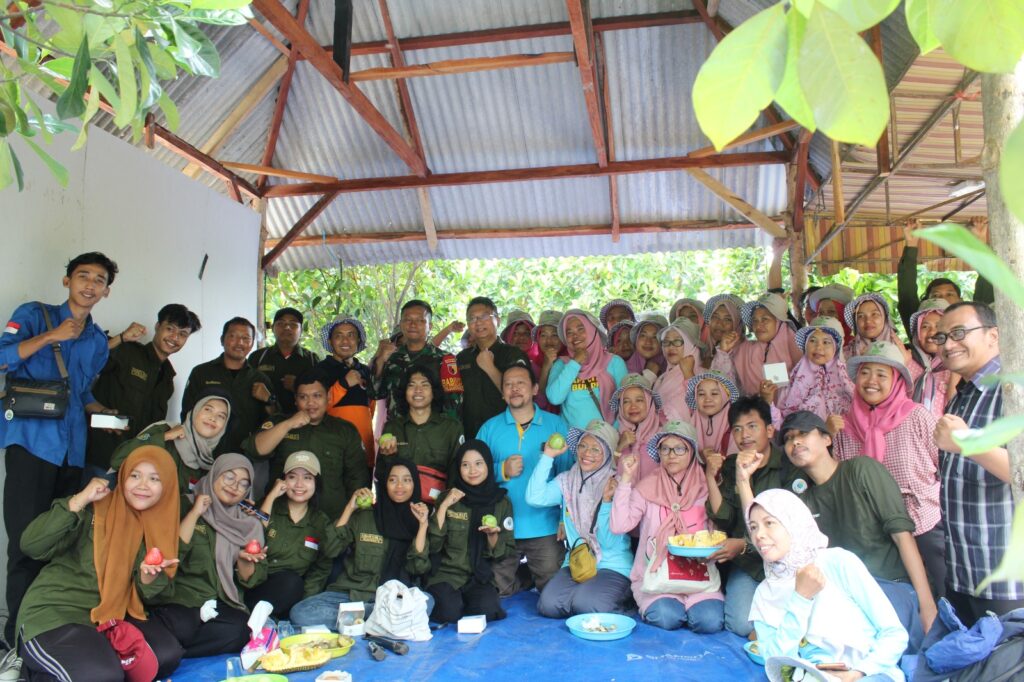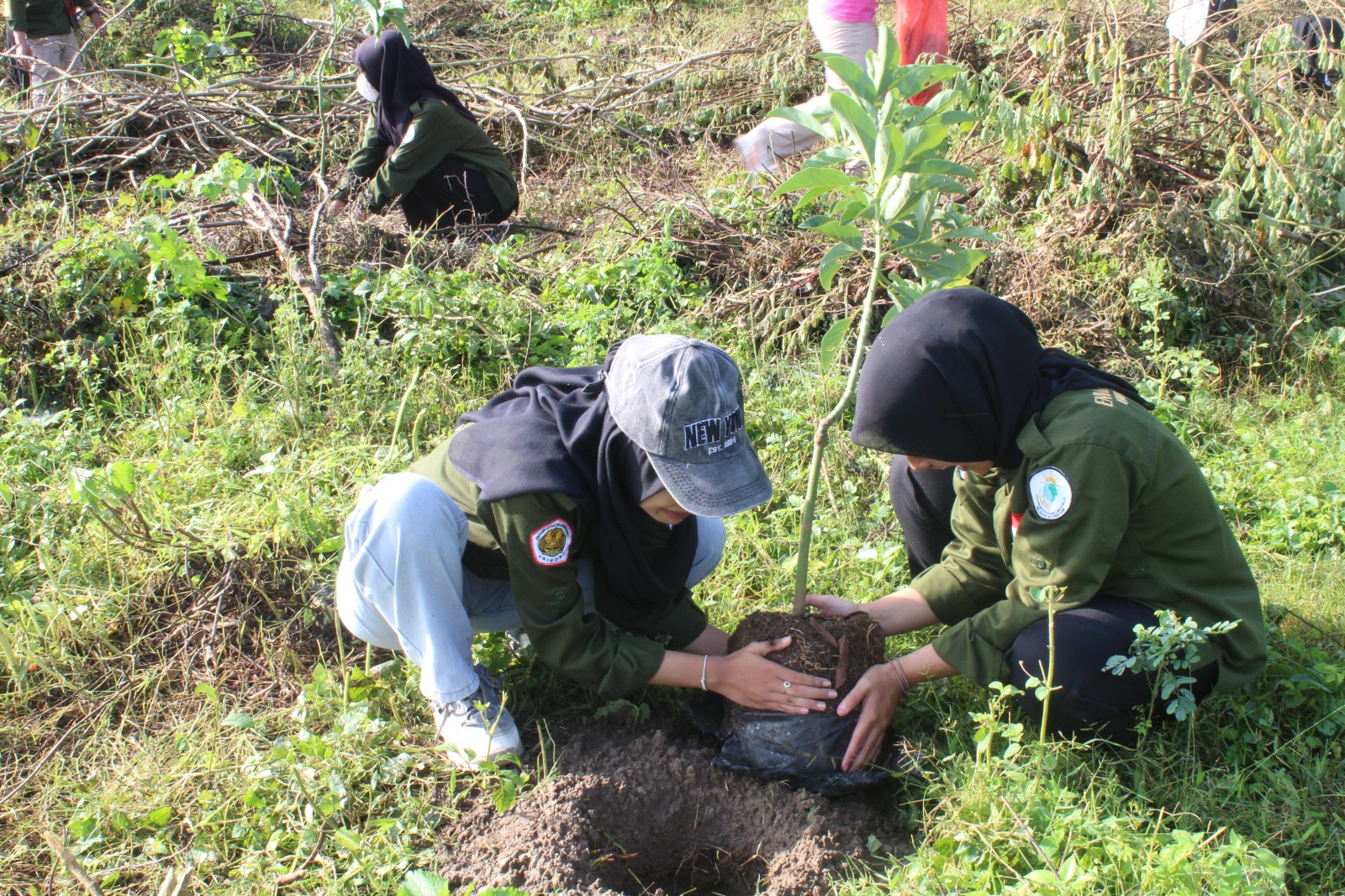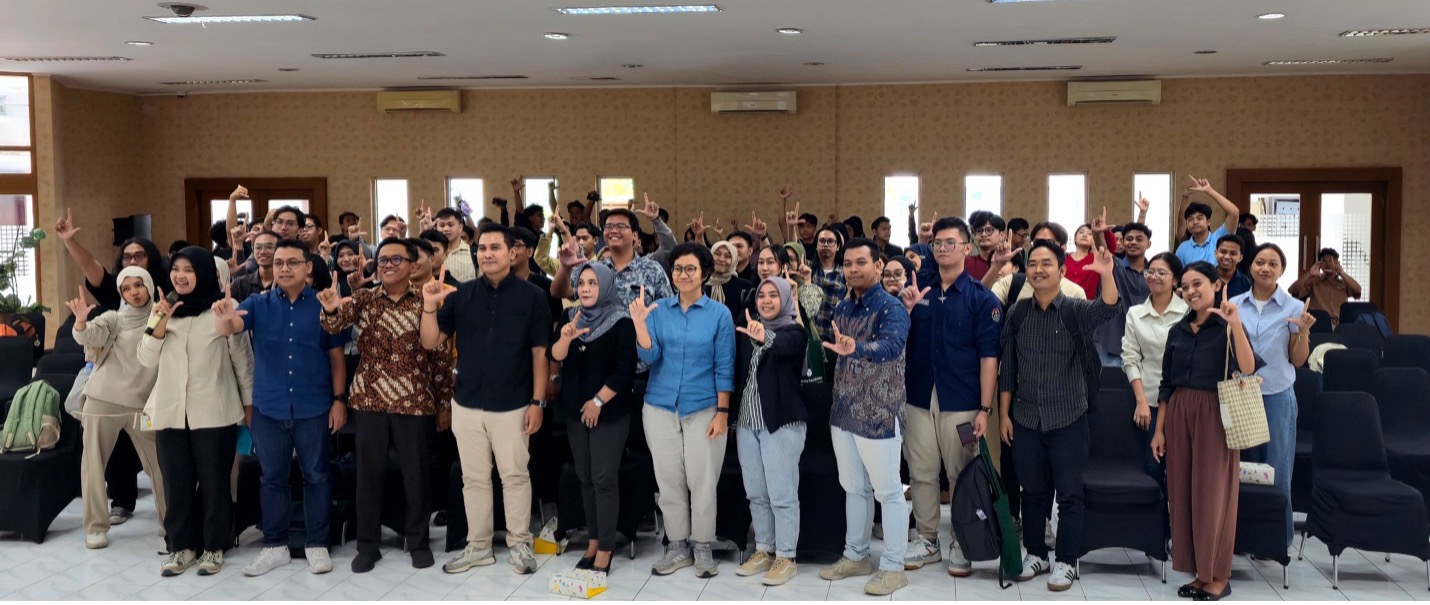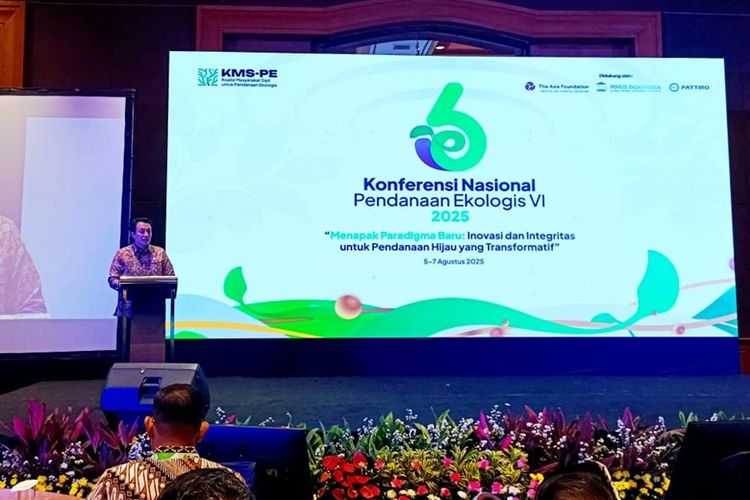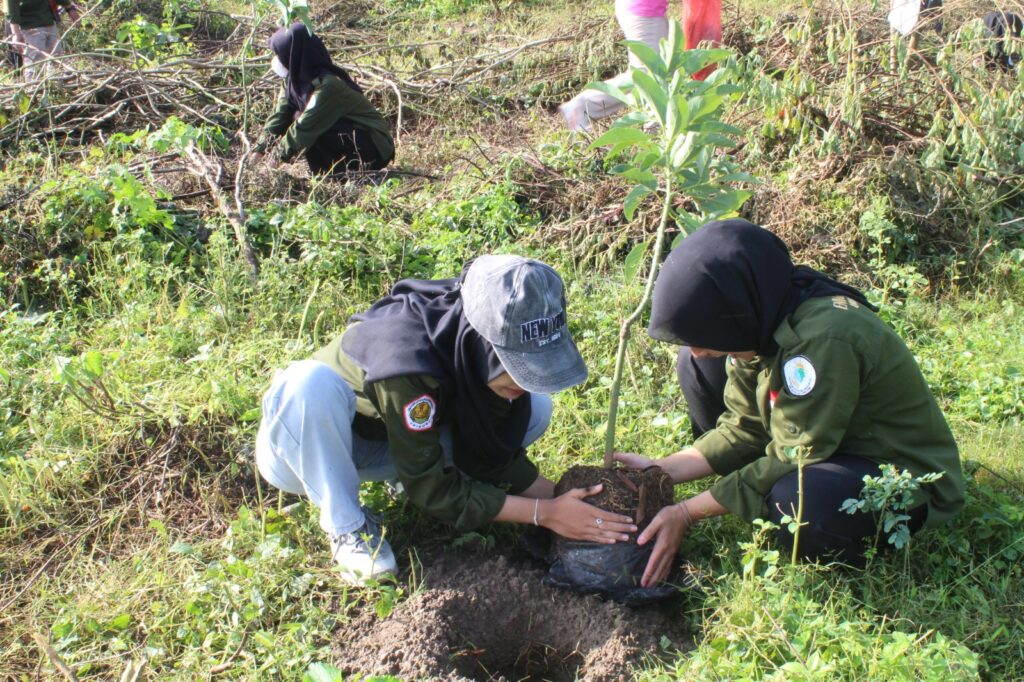
The Sukoharjo Village Government (Pemdes), Kalitidu District, Bojonegoro Regency together with residents, universities and several civil society groups planted trees for environmental conservation and development of agroforestry areas in Sukoharjo Village, on Sunday (4/2/24). In the future, this activity will become a routine activity carried out by the Village Government and local residents.
This series of activities includes planting Pule Tree seedlings which function to prevent abrasion on the banks of the Bengawan Solo River and Avocado Trees which function for fruit picking tourism on village land. This was then followed by a workshop to discuss opportunities for developing agroforestry villages involving multi-stakeholders and theatrical arts related to greening the earth.
This activity is a collaborative initiative that emerged from mutual concern and understanding between the village government, residents, academics and several civil society group activists regarding the increasingly severe condition of environmental damage that has led to the climate crisis. Sukoharjo Village is one of the oil and gas producing villages in Bojonegoro. This greening movement is part of our moral responsibility to contribute to absorbing carbon emissions. Apart from caring for the environment, this activity also aims to increase residents’ income through developing the cultivation of fruit plants that have economic value.
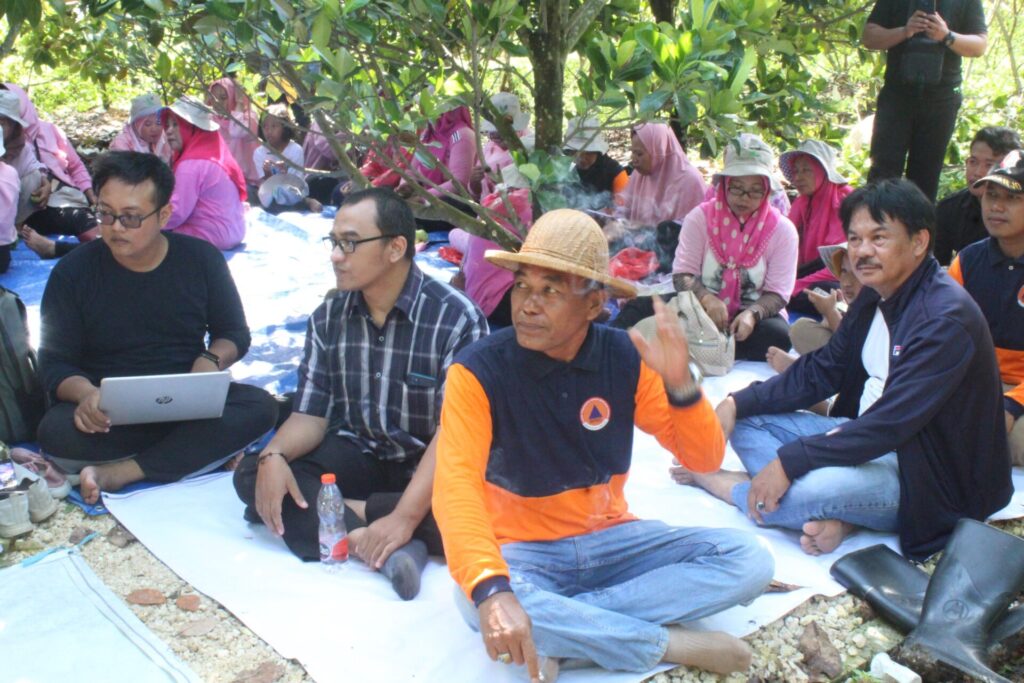
The development of this agroforestry area was carried out collaboratively involving multiple parties, namely the Sukoharjo Village Government, Bojonegoro Institute (BI), Ecotourism Activist Agni Istighfar Paribrata from the East Java Ecotourism Forum (EJEF), Bojonegoro University, East Java Forest Adoption Foundation (YAH-JT), Media Art Actors and others.
Sukoharjo Village is one of the pilot projects of the Institutional Strengthening and Innovation Development Program for the Acceleration of Village Poverty Alleviation which is being implemented by the Bojonegoro Institute in collaboration with the Regional Research and Information Center (PATTIRO) through the support of the Ford Foundation. This activity uses a sustainable livelihood approach (sustainable livelihood approach).
The temporary conclusion of the 5 (five) livelihood capitals, in the form of natural capital, human capital, social capital, financial capital and infrastructure capital, is that the exploitation of oil and gas resources has not caused a multiplied effect on several livelihood parameters of local village communities. As a village affected by the Kedung Keris Block Cepu Oil and Gas Field industry, Sukoharjo Village bears a heavier social and environmental burden, starting from poverty, social inequality, and the impacts of other industrial activities that affect the livelihoods and environment of local residents.
